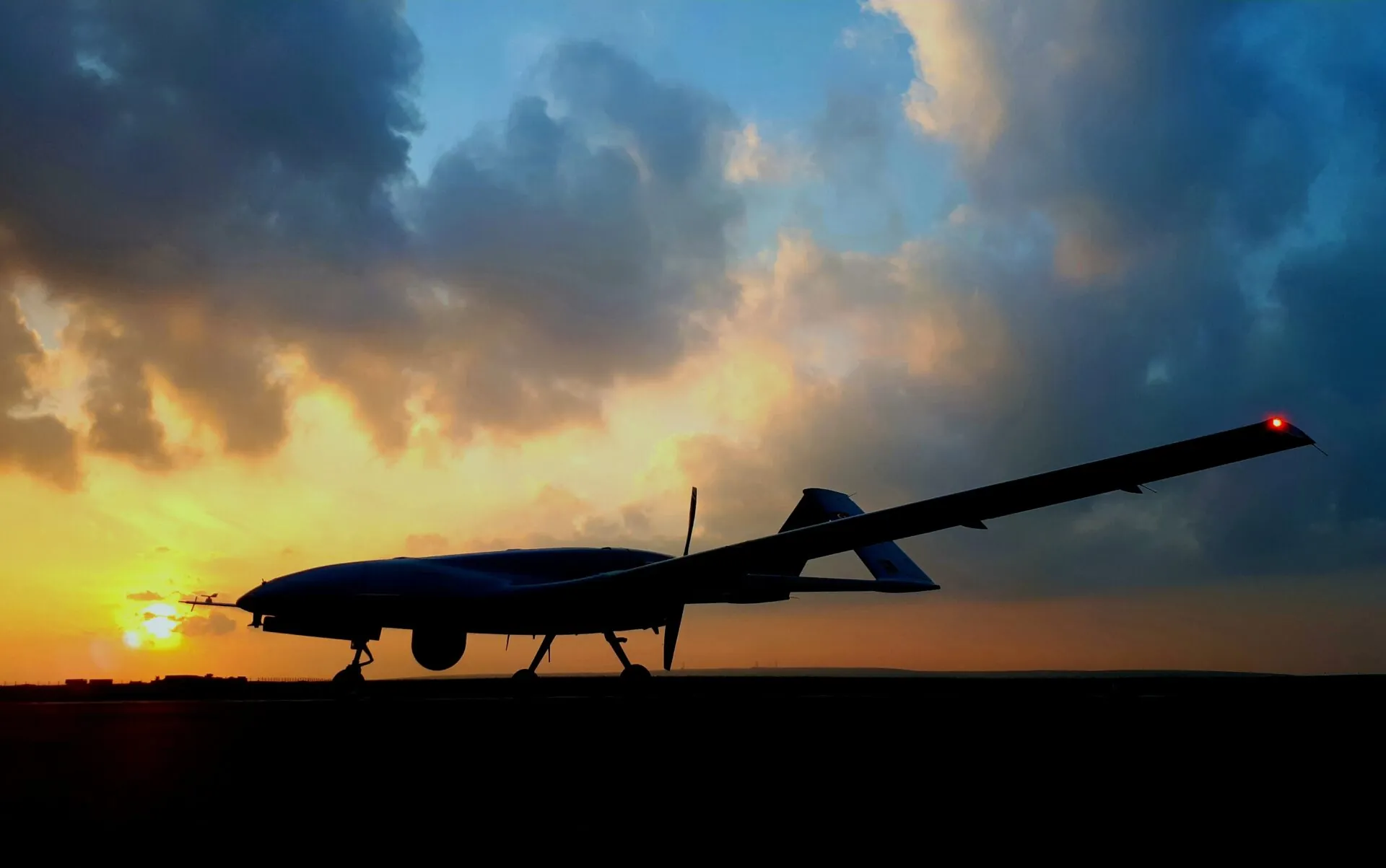Drone attacks are a complex and developing security threat to military operations, homeland security, and international stability. Attacks by unmanned aerial vehicles (UAVs) can include any number of targets, including military installations, government buildings, power stations, airports, and civilian populations. A wide range of available UAVs, from small and modified consumer drones to military-grade platforms outfitted with weaponry and powerful surveillance systems, makes it possible for individuals, nonstate actors, and states to conduct remote attacks.
When it comes to conducting precision strikes on specified targets, including infrastructure and personnel, the military frequently uses armed drones. Drone attacks conducted by terrorists and insurgents may involve improvised explosive devices, adding another wrinkle to security concerns. A substantial number of recent drone attacks have targeted energy infrastructure, raising concerns over the vulnerability of such systems. Securing essential infrastructure from the threat of drone attacks will require a coordinated response from federal and state agencies, local law enforcement, and the owners of these facilities.

Drones can offer numerous advantages for the energy industry. Drone surveillance technology can substantially cut asset inspection time and reduce labor costs while providing higher-quality data that can be used to maximize energy production. Operations can be assessed using drone footage to identify issues and find solutions rapidly. Despite their many benefits, however, the technology can also be exploited, posing security risks. A comprehensive approach and international collaboration are required to strike a balance between the technological advancements in the drone industry for the energy sector (including artificial intelligence, machine learning, computer vision, and cloud computing) and the ethical, legal, and strategic implications of attacks on energy infrastructure.
Many moral and legal questions about the security of energy infrastructure and the people who rely on it arise when drones target this infrastructure: the safety of civilians, humanitarian crises, environmental repercussions, disruption of key services, legal framework, and accountability and responsibility. To address these issues, a comprehensive approach that upholds justice, accountability, and human rights while protecting crucial infrastructure essential for sustainable growth and well-being is needed.
Energy Infrastructure at Risk for Drone Attacks
Drone strikes on energy infrastructure can disrupt the supply of power, heat, and fuel to homes and businesses. Power plants, electrical grids, oil and gas facilities, transportation infrastructure for energy resources, facilities for fuel storage, control centers, and communication infrastructure all are susceptible to drone assault. Drone strikes can cause significant damage to power plants of all kinds, whether thermal, nuclear, hydroelectric, or renewable energy facilities. Disruption of power facilities can cause extensive blackouts, which in turn affect residential, industrial, and commercial users and essential infrastructure. The transmission towers, substations, and electrical distribution lines that make up the power grid are all essential components that, if attacked by drones, could result in disruptions to the power supply, damage to equipment, and potential safety issues.
Oil refineries, natural gas processing plants, pipelines, and storage terminals are other potential drone targets. Sabotage of oil and gas infrastructure can cause supply shortages, fires, explosions, and environmental damage. Drone strikes might disrupt the transport of coal, natural gas, and oil at ports, airports, railroads, and highways, affecting energy supply chains and disrupting economic activity. If a drone strike compromises a critical facility, such as a control center, substation, fuel storage depot, or emergency response center, it could pose a danger to safety and operational integrity. Potential targets for drone assaults include communication towers, satellite facilities, and data centers that enable operations of energy infrastructure. Disruptions to communications networks can impede emergency response activities and stakeholder collaboration.

Recent Case Studies
Al-Houthi/Saudi Arabia Conflict: In September 2019, Yemeni al-Houthi rebels attacked Saudi Arabian oil refineries and energy infrastructure using 10 long-range UAV-X drones. The strikes interrupted 5.7 million barrels per day of oil production, affecting Saudi Arabia’s economy, regional security, and global energy markets. Al-Houthi attacks on Saudi energy facilities included off-the-shelf commercial and consumer drones, ballistic missiles, and armed military-grade UAVs. Refineries, processing plants, pipelines, and storage tanks were hit, impacting Saudi Arabia’s oil production and exports, shutting down facilities, and influencing global oil prices. The Saudi government condemned the attacks and took measures to fortify its electricity generation and distribution infrastructure. Saudi Arabia’s response included the subsequent use of air defense systems to intercept drones and missiles, attacking al-Houthi targets in Yemen, and collaborating with international partners. .
Russia-Ukraine War: Russia has used drones to launch assaults against Ukrainian energy sources ever since the conflict between Russia and Ukraine began. The goal of these strikes is to weaken not only the Ukrainian economy but also the morale of its people. The Ukrainian government has retaliated with a series of drone attacks targeting Russian power plants, gasoline distribution depots, and industrial refineries. Ukraine has highlighted its new drone capabilities by hitting military and energy installations deep within Russia.
Ukraine claimed that on Jan. 30 the Russian military attacked several regions with a fleet of 35 drones and two guided missiles. The Ukrainian military reported shooting down 15 of the drones, which were intercepted over Mykolaiv, Sumy, Cherkasy, Dnipropetrovsk, Kharkiv, Kherson, and Kyiv. The Russian military said the attacks targeted gasoline and energy sector infrastructure. Facilities and equipment used for the generation and transmission of electricity in Ukraine were either damaged or destroyed as a result of this attack, resulting in a blackout in a community in Chernihiv oblast and damage to an electrical substation in Dnipropetrovsk oblast.
On Jan. 29, Russian regional authorities said defense countermeasures installed at a refinery near Yaroslavl had blunted the effects of an Ukrainian drone attack against the facility, which has a production capacity of 300,000 barrels per day. Fuel output was briefly interrupted in the wake of the attack, but there was no major damage. Regular attacks with bigger drones might disrupt oil production and operations at Baltic ports and lead to decreases in oil export volumes. A global increase in oil prices and interruptions to supply could result from a major disruption to oil and gas export facilities. A Ukrainian drone attack in April targeted a refinery in Russia’s Tatarstan region, causing a fire at the facility that processes about 155,000 barrels of crude a day.
Ukrainian drones also targeted an oil refinery in southern Russia on Jan. 25, according to a source from Ukraine. The strike targeted a Rosneft-managed export-oriented oil refinery in the town of Tuapse in southern Russia, causing a fire that was soon put out.

Drone technology has been utilized extensively in armed conflicts; nevertheless, the conflict between Russia and Ukraine is generating unprecedented breakthroughs in autonomous warfare. Russia and Ukraine are rushing to create AI-guided drones in reaction to electronic warfare systems that can disrupt signals between the drones and their operators. AI lets drones adapt to changing situations and settings, making them useful for many activities (adaptive behavior). AI also detects and avoids obstructions, decreasing drone collisions and accidents (increased safety). Because they can detect and lock their targets independently of their pilot, these drones are immune to signal-jamming. Artificial intelligence systems might play a more central role in drone warfare.
Red Sea Conflict: The current conflict in the Red Sea region, as well as drone attacks, pose a threat to global energy security. Al-Houthi forces in Yemen have increasingly used drones and ballistic missiles against civilian vessels, posing a new danger to the Red Sea’s energy infrastructure and public transportation systems. The maritime energy trade profoundly affects the security of energy supplies and consumers alike. Significant interference with navigational freedom would have indirect but far-reaching repercussions such as reducing the rate of progress in combating climate change. To keep global energy markets safe and efficient, freedom of navigation is crucial.
Globally, notable drone strikes have occurred on a number of battlefields, and there are concerns regarding the possibility of additional targeted attacks on energy assets and infrastructure. Since the beginning of the fighting between Russia and Ukraine, drone attacks have been used against both military and energy infrastructure targets by both sides of the conflict. In the future, it is likely that both sides will experience an increase in the frequency and severity of these drone strikes; however, targets of energy infrastructure attacks appear to be shifting. At the outset of its invasion of Ukraine, Russia used drones to target Ukraine’s electricity grid infrastructure. Recent attacks, however, have shifted the focus onto power-generation facilities. On the other side, Ukraine used long-range strike drones to attack energy storage facilities and power substations inside Russia.
In the Red Sea conflict, al-Houthi forces’ drone attacks have slowed global trade and energy transfers. Attacks against commercial shipping in the Red Sea have brought to light the significance of the international maritime trade as well as the challenges associated with protecting global energy markets and commerce. The Red Sea drone attacks have disrupted trade between Europe and Asia and caused physical damage, creating costly delays and added costs for shipments. Drone attacks on energy infrastructure will continue to be a future tactic, particularly during times of war and confrontation. It is imperative that the federal, state, and local governments, as well as the public and private owners and operators of critical energy assets institute procedures to safeguard vital infrastructure against such attacks. Protecting the resilience of the power system and increasing the safety of the energy supply are two of the most important concerns regarding drone attacks.
Dr. Chaouki Ghenai is a Non-Resident Senior Fellow for Energy Strategy and Policy at the New Lines Institute. He oversees new energy initiatives for the institute, including Future and Innovative Energy Technologies, Geopolitics of Energy Transformation, Clean Energy Financing, New Energy Policies, and Sustainable Energy and Society. Ghenai is among the world top 2 percent of scientists in the Energy Field (Mechanical Engineering and Transport – Enabling & Strategic Technologies). He received his Ph.D. and master’s degrees in Mechanical Engineering from Orleans University, Orleans, France, and bachelor’s degree in mechanical engineering from Constantine University, Constantine, Algeria. He has more than 25 years of research experience in the energy field and management of Clean Energy Research Programs and Research Funding. Ghenai has published more than 200 research papers in technical journals, book chapters, and books.
The views expressed in this article are those of the author and not an official policy or position of the New Lines Institute.






